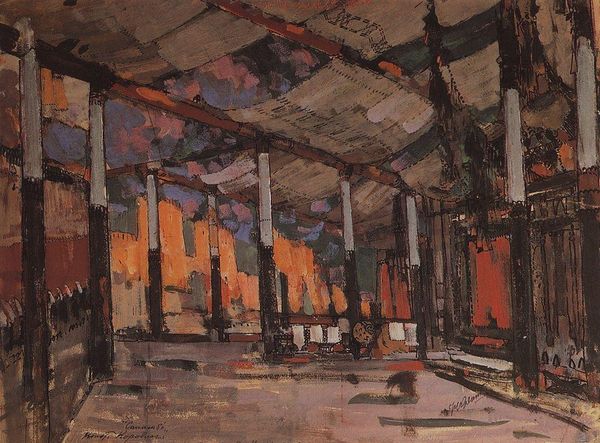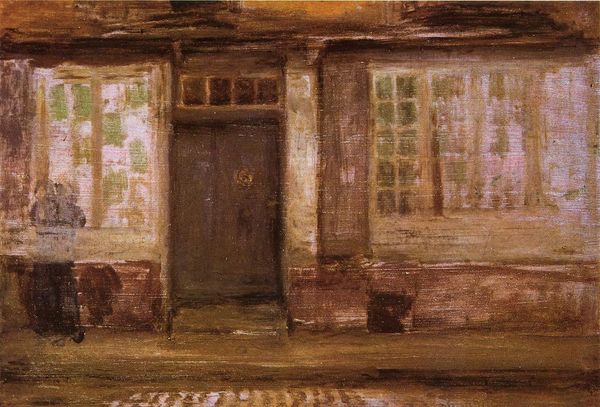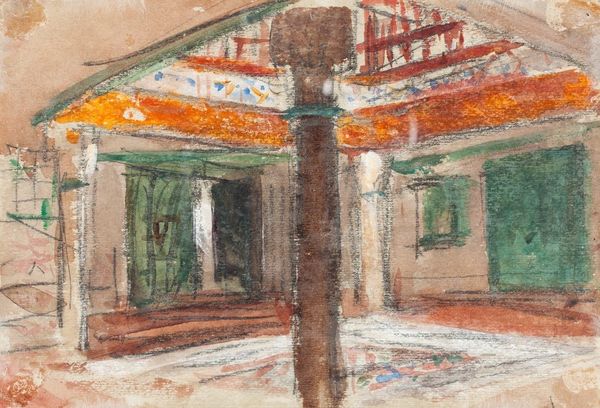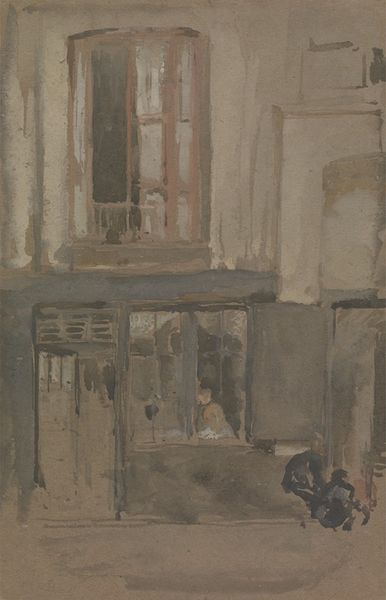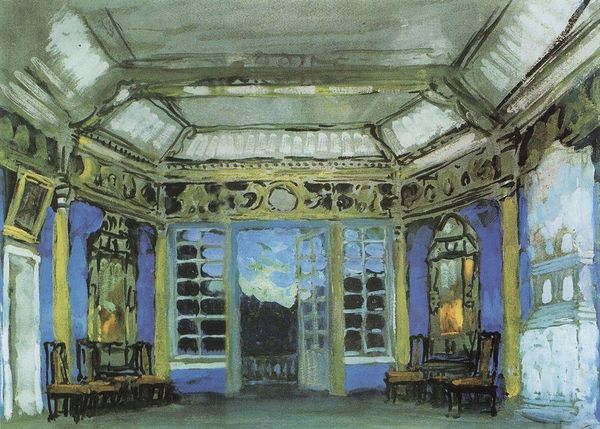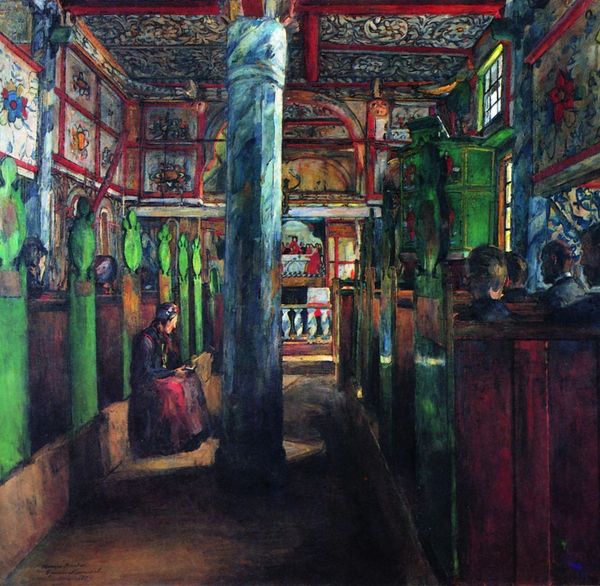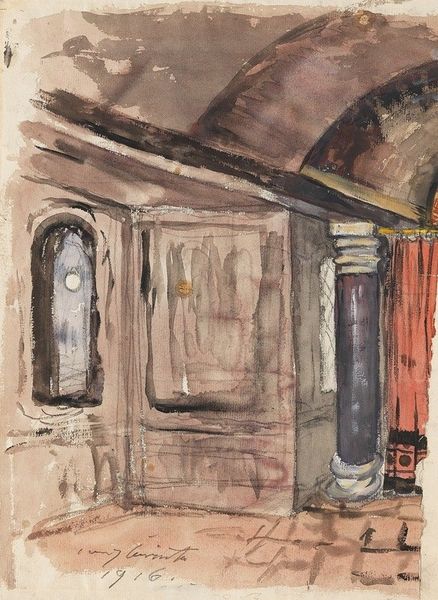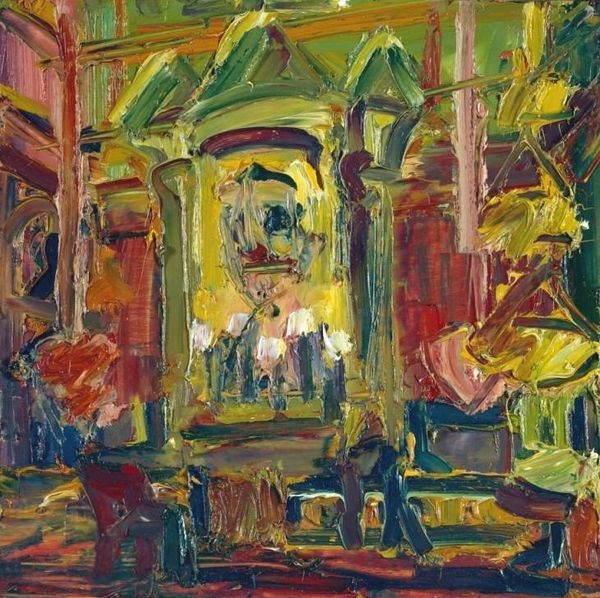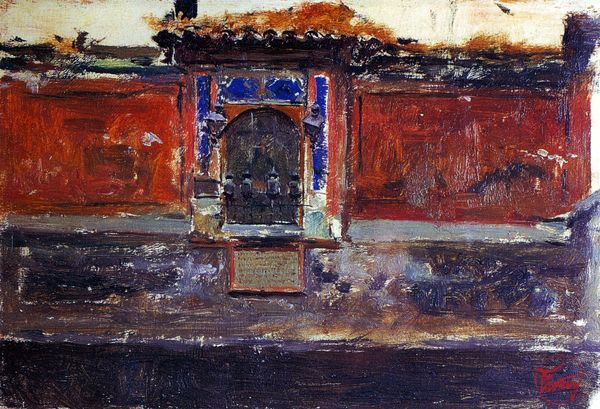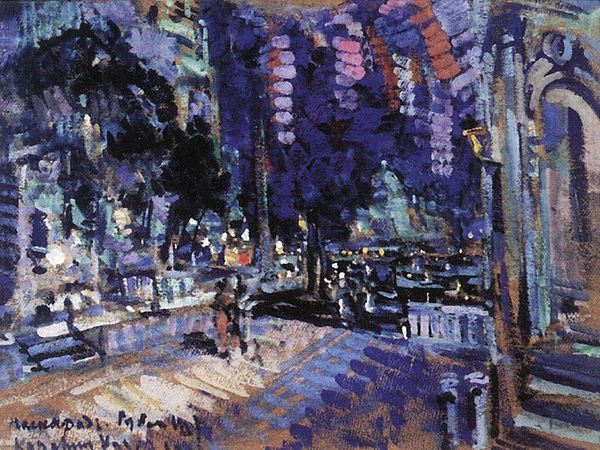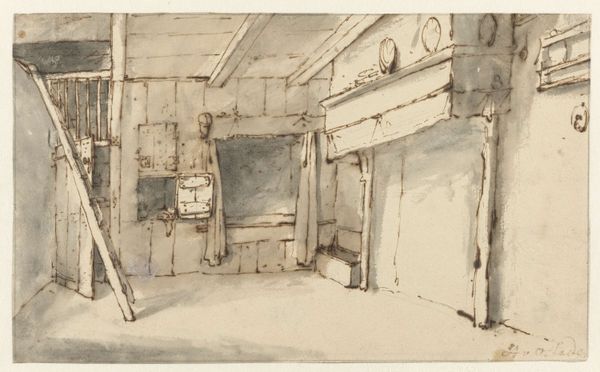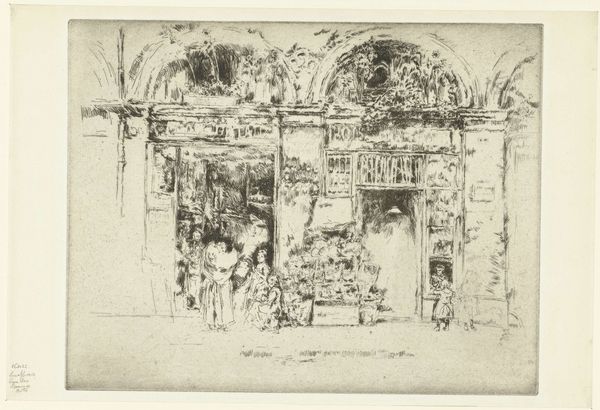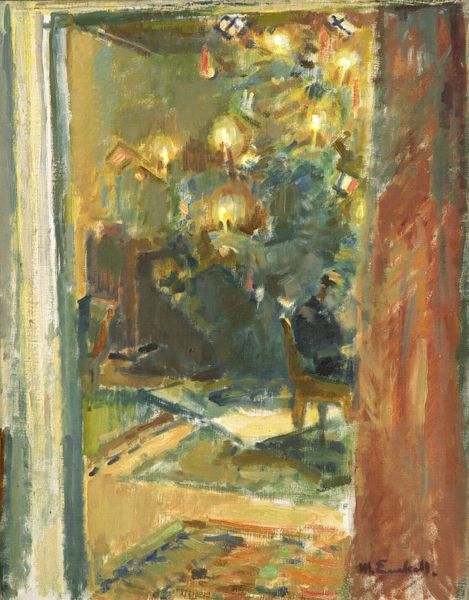
Copyright: Public domain
Editor: Here we have "Salambo's Room," a watercolor painting by Konstantin Alexeevich Korovin, created in 1909. It feels so theatrical, almost like a stage set. I'm drawn to the bold brushstrokes, and I'm wondering what elements jump out to you from a formalist point of view? Curator: The articulation of space, undeniably. Observe how Korovin employs orthogonal lines which, though not converging to a single vanishing point, establish depth and recession. The columns and archways are depicted with a deliberate lack of precision. Does this abstraction affect your reading of the subject? Editor: It makes the space feel ambiguous, like it could be real or imagined. The pillars aren’t perfectly straight, almost as though they are rendered in my mind. What do you make of the restricted colour palette, which gives way to near monochrome tones? Curator: Precisely. Note the interplay between warm hues of ochre and cooler shades of green and blue, they're orchestrated to generate visual tension. It keeps our eye traveling and forces a reading of the space as active. Consider how the loose, fluid brushwork contributes to this sense of dynamism; ask yourself whether a more rigid representation would offer a different, perhaps static, experience. Editor: The more I look, the more I notice the small, bright highlights – like the chandelier in the background and the spot of light on the green wall – and I see they are really effective, really anchoring the piece. Curator: Precisely. And it is in the very nature of such juxtapositions that art speaks: it prompts consideration of structure and expression. Editor: I see how, by focusing on the formal qualities, you can reveal so much about how a work functions and what it communicates. It's more than just pretty colors. Thank you for your thoughts! Curator: It's been a pleasure, and remember to observe how artistic conventions are continuously reinvented, and reassessed in the everchanging continuum of culture and perception.
Comments
No comments
Be the first to comment and join the conversation on the ultimate creative platform.
